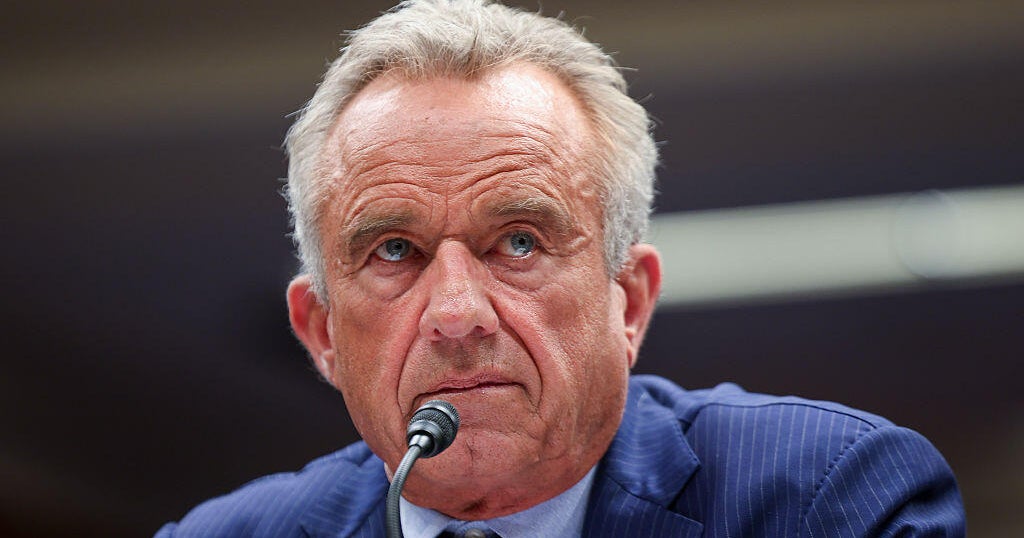The Department of Health and Human Services’ budget request for the 2026 fiscal year consolidates the department’s 28 divisions to 15 to make way for a new “institution of public health.”
The new agency, the Administration for a Healthy America, has a $20.6 billion budget designed to support Health Secretary Robert F. Kennedy Jr.’s “Make America Healthy Again” agenda. That includes taking over — and significantly reducing — funds for the Centers for Disease Control and Prevention’s chronic disease and global health centers along with some of the institutes that are currently part of the National Institutes of Health.
The Administration for a Healthy America, or AHA, says it will take a “root cause” approach to chronic disease prevention, according to the agency’s budget request, released last Friday. But the budget proposes cutting funding for all programs in the CDC’s chronic disease center and would make significant cuts to existing primary care, mental health and environmental health programs.

The cuts slash the CDC’s budget from nearly $9.2 billion in FY 2024 to $4.2 billion. At least 20%, or $1 billion, of the funding cut is moving to AHA.
The cuts will have a trickle-down effect on states and cities. The vast majority of CDC funding is discretionary and funneled to state and local health departments. Last year, these departments received $4.5 billion of CDC funding to “promote and protect health in their communities.”
And even where funds are maintained, the restructuring could come at a cost, according to Richard Frank, director of the Center on Health Policy at the Brookings Institution.
“The CDC has over the years developed a lot of human capital,” Frank said. The agency’s infectious disease response, involving surveillance and expert teams sent to the source of an outbreak, is “not something you learn overnight that you can just move around easily without disrupting how effective it is.”
The budget request also cuts the NIH by about 40% and dissolves agencies including the Substance Abuse and Mental Health Services Administration and the Health Resources Service Administration.
“The Budget reflects needed reforms to put health care spending on a sustainable fiscal path and proposes policies to Make America Healthy Again,” HHS press secretary Emily Hilliard wrote in a statement to CBS News. “The United States remains the sickest developed nation despite spending $4.5 trillion annually on health care, resulting in an exploding debt that poses a critical threat to our country along with worsening health outcomes.”
Kennedy has repeatedly decried the “childhood chronic disease crisis” in America. That was a central focus of his “Make America Healthy Again” commission report. The report has been criticized for citing studies that do not exist, including false information and omitting established drivers of chronic disease in children that health authorities are already working to address.

Chronic disease prevention
The latest budget request would eliminate the CDC’s Center for Chronic Disease Prevention and Health Promotion, for which $1.4 billion was appropriated in FY 2024. Instead, AHA would fund primary care, environmental health, mental health and nutrition programs. This, according to the department, would prevent chronic disease from the source, rather than fund individual programs on cancer, diabetes, heart disease and other diseases as the CDC’s chronic disease center did.
Nearly 70 organizations, including the American Heart Association and the American Association of Colleges of Nursing, signed a letter to leaders of the House and Senate appropriations committees in mid-May, after an earlier version of the budget was leaked. They expressed their opposition to the budget’s elimination of the CDC’s chronic disease center.
The programs in the center “work with states and territories to prevent disease, detect it early, and manage it effectively,” said the letter. Eliminating them “would destabilize public health systems at every level and jeopardize decades of progress.”
Global health
The FY 2026 budget request eliminates the CDC’s Global Health Center, and instead allocates $239 million toward global health protection, under the CDC’s broader “CDC-Wide Activities” budget line. The Global Health Center spent $711 million in FY 2024.
Defunding the center comes alongside the Trump administration’s dismantling of the U.S. Agency for International Development and withdrawal from the World Health Organization. These actions will have consequences for Americans in addition to those abroad, said Janeen Madan Keller, deputy director of the Global Health Policy Program at the Center for Global Development, a think tank based in Washington, D.C.
“From our own experience with epidemics and pandemics, we know that infectious diseases do not respect borders,” Keller said. “It’s really important that we have the ability to stop these outbreaks in their tracks before they reach our border.”
Other programs
AHA consolidates federal HIV/AIDS prevention and research. It cuts $794 million of the CDC’s funding for domestic HIV/AIDS prevention and takes over HIV/AIDS programs from other agencies. In total, AHA allocates a combined $2.7 billion to the virus and resulting disease — almost $1 billion less than those programs were appropriated in FY 2024.
Other centers moved from the CDC include its centers for Birth Defects, Developmental Disabilities, Disability and Health, Injury Prevention and Control, and Occupational Safety and Health. Some of the funding from these centers has been moved to broader programs within AHA, according to the budget proposal.
Before the budget is passed, it will be reviewed by congressional subcommittees before the House and Senate prepare their own budget resolutions later this year.


